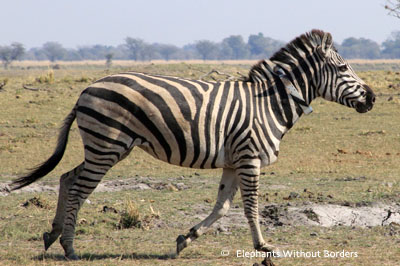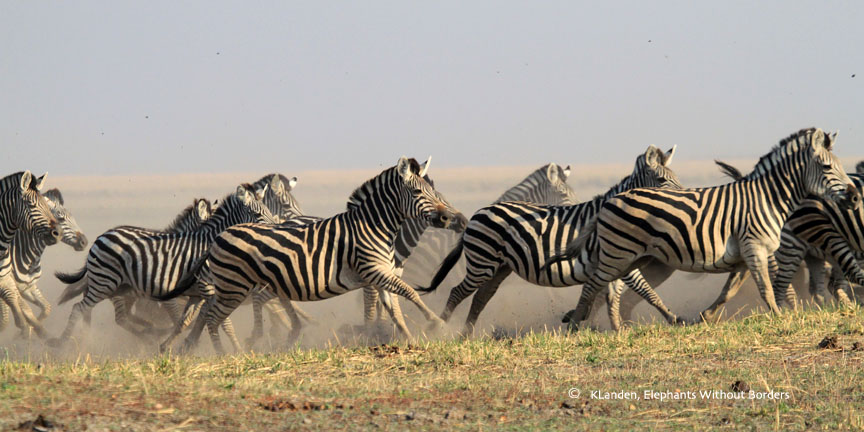Zebra Without Borders
Elephants Without Borders (EWB) recently expanded its projects to include large herbivores. The major emphasis of this new research project is to provide novel and meaningful data to conservationists in the Kavango Zambezi Transfrontier region, specifically on the ecology of wildlife species for which we currently have limited or no information. (read blog, EWB’s Exciting New Large Herbivore Research)
One segment of this conservation initiative includes studying the zebra populations on the western floodplains of Botswana’s Chobe River, whose numbers appear to be increasing. EWB’s dry season aerial surveys along the Chobe floodplains estimate the population to number approximately 3000 zebra. The seasonal movements of these zebra were unknown. In response, EWB deployed three satellite collars on zebra in August 2012 to map their seasonal dispersal.
During the dry season, the zebra aggregated along the Chobe floodplains. In October, the zebra crossed the Chobe River, moving 15 km north into Namibia’s Caprivi Strip. When the rains started in early December the zebra moved south to the interior of Chobe National Park.
Conservationists, guides, and scientists in the region speculated this zebra population migrated west to the Linyanti or perhaps to the Savuti Marsh during the rainy season. Surprisingly, the three collared zebra have moved to neither the Linyanti or the Savuti Marsh, as suspected. Two zebra, 001 and 002 have moved southeast towards the Seloko Plains region. A third zebra, 003 trekked a remarkable 240 km in a straight line south to Nxai Pan National Park.
This new cross border zebra route has never been mapped. It is a major conservation finding at a time when long distance movements are being lost around the world. Farming and human disturbance along the floodplains may compromise their dry season habitat. Further research and time might reveal this dispersal to possibly be the longest transboundary mammal migration in southern Africa. An effort to conserve their small dry season refuge along the Chobe River is urgent.
These sorts of findings should serve to inspire conservationists to continue with their commitment to conserve and retain such increasingly rare events as part of Botswana’s rich and unique biological heritage. Funding for this project was provided by the Paul G Allen Family Foundation and the San Diego Zoo Global Wildlife Conservancy, with the support of the Botswana Department of Wildlife and National Parks.
To learn more, contact or support Elephants Without Borders:
http://www.elephantswithoutborders.org/
http://www.elephantswithoutborders.org/donate.php
https://www.facebook.com/elephantswithoutborders
Tags: aerial survey, africa, botswana, chobe, conservation, corridor, DWNP, education, elephants without borders, migration, Namibia, research, satellite, wildlife, zebra










